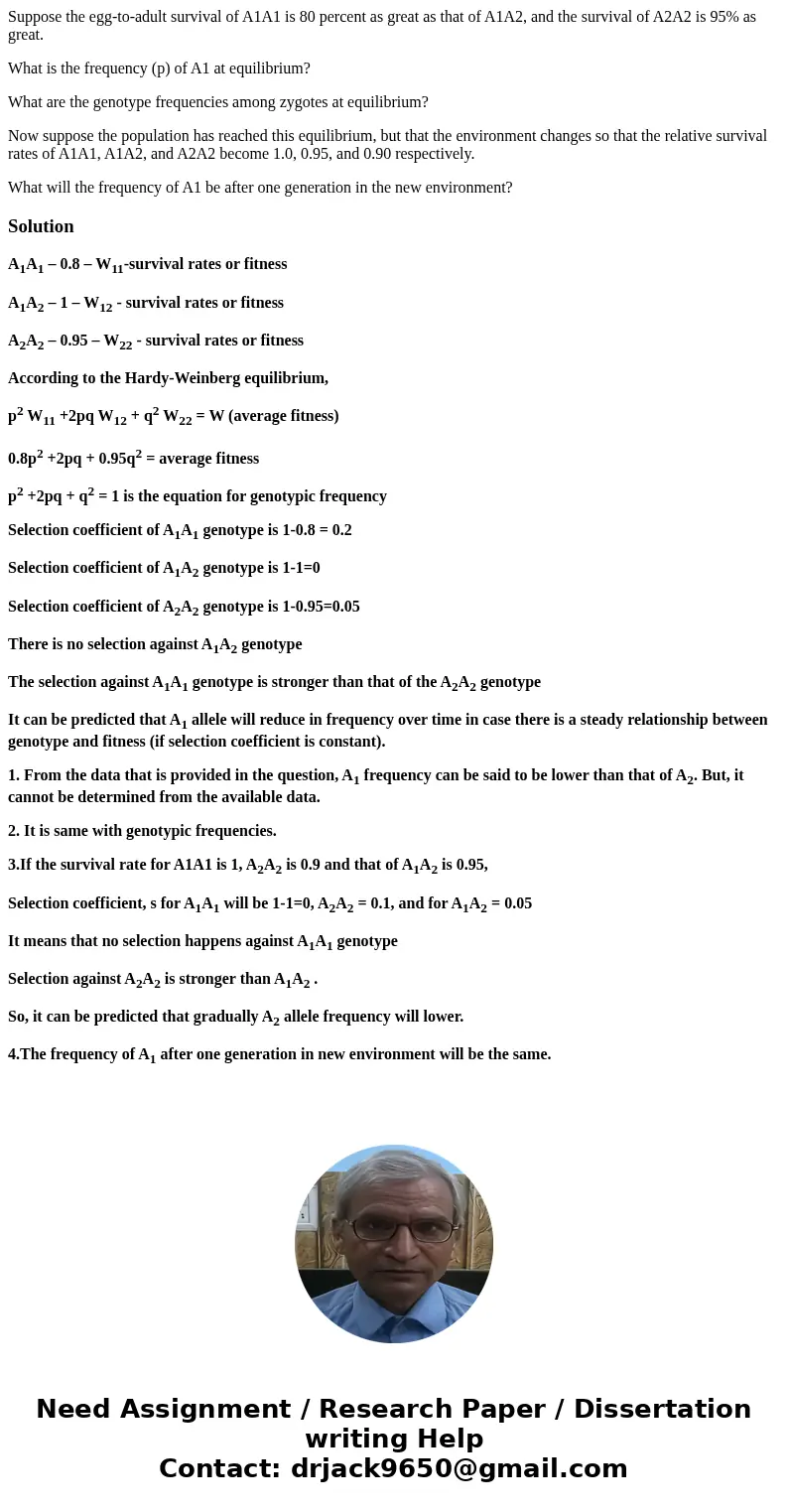Suppose the eggtoadult survival of A1A1 is 80 percent as gre
Suppose the egg-to-adult survival of A1A1 is 80 percent as great as that of A1A2, and the survival of A2A2 is 95% as great.
What is the frequency (p) of A1 at equilibrium?
What are the genotype frequencies among zygotes at equilibrium?
Now suppose the population has reached this equilibrium, but that the environment changes so that the relative survival rates of A1A1, A1A2, and A2A2 become 1.0, 0.95, and 0.90 respectively.
What will the frequency of A1 be after one generation in the new environment?
Solution
A1A1 – 0.8 – W11-survival rates or fitness
A1A2 – 1 – W12 - survival rates or fitness
A2A2 – 0.95 – W22 - survival rates or fitness
According to the Hardy-Weinberg equilibrium,
p2 W11 +2pq W12 + q2 W22 = W (average fitness)
0.8p2 +2pq + 0.95q2 = average fitness
p2 +2pq + q2 = 1 is the equation for genotypic frequency
Selection coefficient of A1A1 genotype is 1-0.8 = 0.2
Selection coefficient of A1A2 genotype is 1-1=0
Selection coefficient of A2A2 genotype is 1-0.95=0.05
There is no selection against A1A2 genotype
The selection against A1A1 genotype is stronger than that of the A2A2 genotype
It can be predicted that A1 allele will reduce in frequency over time in case there is a steady relationship between genotype and fitness (if selection coefficient is constant).
1. From the data that is provided in the question, A1 frequency can be said to be lower than that of A2. But, it cannot be determined from the available data.
2. It is same with genotypic frequencies.
3.If the survival rate for A1A1 is 1, A2A2 is 0.9 and that of A1A2 is 0.95,
Selection coefficient, s for A1A1 will be 1-1=0, A2A2 = 0.1, and for A1A2 = 0.05
It means that no selection happens against A1A1 genotype
Selection against A2A2 is stronger than A1A2 .
So, it can be predicted that gradually A2 allele frequency will lower.
4.The frequency of A1 after one generation in new environment will be the same.

 Homework Sourse
Homework Sourse